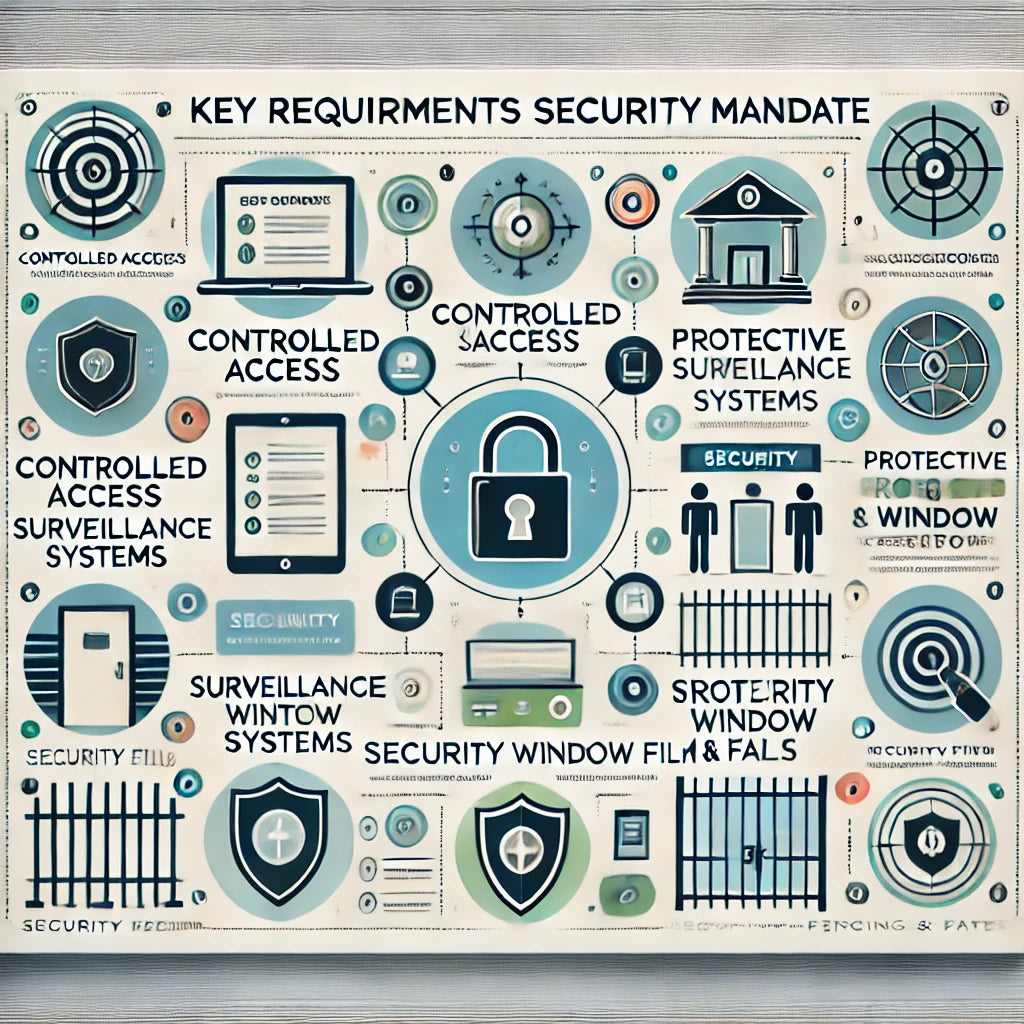As someone who had the privilege of working closely with the Texas legislature on shaping the new school security mandate, I’ve seen firsthand the commitment to ensuring that our schools are fortified against modern threats. This mandate is not just another regulation; it’s a comprehensive approach designed to protect our most valuable assets—our students and educators. Understanding these requirements is the first step toward making our schools as secure as possible.
1. Overview of the Mandate
The Texas Education Association (TEA) has put forth a robust set of guidelines aimed at enhancing the safety of our schools. These requirements are the culmination of extensive research, stakeholder input, and the urgent need to address evolving security challenges. The mandate encompasses a wide range of measures, from physical barriers to technological upgrades, all aimed at creating an environment where learning can thrive without fear.
This initiative was born out of necessity, responding to incidents that underscored vulnerabilities in our school security infrastructure. The mandate is designed not just to meet immediate needs but to provide a long-term solution that adapts to future challenges. It’s a framework that reflects our collective responsibility to safeguard our schools.
2. Key Requirements
The mandate specifies several key measures that schools across Texas must implement. These include:
- Controlled Access: Schools are required to enhance perimeter security through controlled access points, ensuring that only authorized individuals can enter school premises.
- Surveillance Systems: The deployment of advanced surveillance technologies is mandated to monitor and record activities, serving as both a deterrent and a tool for incident response.
- Protective Barriers: Physical barriers, such as reinforced doors and windows, are critical to delaying or preventing unauthorized entry.
Each of these requirements is designed with one goal in mind: to create a multi-layered defense that protects our schools from potential threats. The mandate doesn’t just dictate what needs to be done but provides the flexibility for schools to tailor their security measures to their specific circumstances.
3. Role of Security Window Film
One of the most effective ways to meet the mandate’s requirements for protective barriers is through the use of security window film. This technology, which might seem straightforward, plays a crucial role in fortifying the physical security of school buildings.
Security Window Film
Security window film works by reinforcing glass, making it significantly harder to break. In the event of an attempted intrusion, the film holds shattered glass in place, delaying entry and giving law enforcement precious time to respond. It also provides blast protection, helping to minimize injury and damage in case of an explosion.
Integrating security window film into your school’s security plan is not only a cost-effective solution but one that aligns perfectly with the TEA’s vision for a safer school environment. It’s a proactive step that can make a significant difference in an emergency situation.
4. Role of Security Fencing & Gates
Security fencing and gates are critical components of the school security infrastructure mandated by the Texas Education Association. These physical barriers are the first line of defense against unauthorized access, effectively controlling who enters and exits school grounds.
Security Fencing:
- Deterrent Effect: A robust security fence acts as a visual and physical deterrent to potential intruders. It signals that the school takes security seriously and has measures in place to prevent unauthorized entry.
- Perimeter Control: Fencing helps define the school’s perimeter, ensuring that access is only possible through designated entry points. This control is crucial for monitoring and managing who is on school property at any given time.
- Durability and Customization: Modern security fencing can be tailored to the specific needs of each school, with options for height, materials, and additional features like anti-climb designs.
Security Gates:
- Controlled Access: Security gates complement fencing by providing controlled entry points. Automated gates with access control systems, such as key cards or biometric scanners, ensure that only authorized individuals can enter the school premises.
- Emergency Access: Properly designed gates allow for quick and controlled access by emergency services, ensuring that help can arrive swiftly if needed.
- Integration with Surveillance: Security gates can be integrated with surveillance systems to provide real-time monitoring of entry and exit points, further enhancing the school’s overall security posture.
Incorporating security fencing and gates into your school’s security plan not only helps meet the TEA’s mandate but also significantly enhances the safety and peace of mind of everyone on campus.
5. Compliance Benefits
Adhering to the Texas school security mandate is about more than just following the law—it’s about ensuring the safety and well-being of everyone on campus. Compliance offers numerous benefits:
- Enhanced Safety: By implementing the required security measures, you’re creating a safer environment for students, staff, and visitors.
- Legal and Financial Protection: Compliance can protect your school from potential legal liabilities and may make you eligible for certain funding or grants.
- Community Trust: Parents and the broader community will have greater confidence in a school that takes security seriously and complies with state mandates.
By fully embracing these requirements, you’re not just protecting your school from external threats—you’re also fostering a culture of safety that extends beyond the classroom.
6. Steps to Implementation
Implementing security window film and fencing as part of your compliance strategy is a straightforward process, but it requires careful planning. Here’s how you can get started:
- Assessment: Begin by evaluating the current state of your school’s windows and perimeter fencing. Identify areas that are most vulnerable.
- Consultation: Work with certified security providers to select the right type of window film and fencing for your needs. Consider factors like the thickness of the film, fence height, and integration with access control systems.
- Installation: Ensure that both the window film and fencing are installed by professionals who are trained to meet the highest standards of security.
- Maintenance: Regularly inspect and maintain the window film and fencing to ensure they remain effective over time.
By following these steps, you’ll not only comply with the Texas mandate but also enhance the overall security of your school in a meaningful way.
Conclusion
The Texas mandate for school security is a critical step forward in protecting our educational institutions. As someone who has been deeply involved in its creation, I can assure you that these requirements are designed with the utmost care and consideration for the unique challenges our schools face. I encourage you to take action now—review your current security measures, consider the benefits of security window film and fencing, and ensure that your school is fully compliant with the mandate. Your commitment to security will make a lasting difference in the lives of those you serve.

